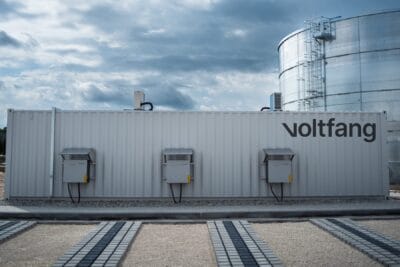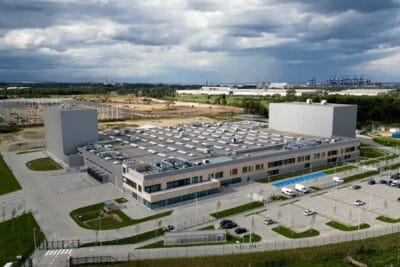Second life automotive batteries for energy storage at Italian airport
The stationary battery energy storage system (BESS) with automotive batteries has been developed with German research institute Fraunhofer Italia-IEC, Enel X, and system integrator Loccioni at Rome’s Fiumicino International Airport. The BESS system provides energy storage so that solar energy gathered during the day is available 24/7 for the airport’s electricity supply. A capacity of 10 MWh of electricity allows the storage system to balance the 31 GWh supplied by the ADR Solar Farm photovoltaic system.
The BESS now installed at Fiumicino Airport is powered by 762 battery modules from Mercedes-Benz, Nissan and Stellantis. The project using electric car batteries dates back to 2022, when a collaboration was launched with Loccioni. Stellantis provided 78 second-life batteries, belonging to the eCMP electric platform dedicated to B-segment cars. Each battery had a capacity of 50 kWh of storage energy, for a total of 3.9 MWh.Nissan says it supplied 84 second-life Nissan LEAF batteries, totalling 2.1 MWh of energy storage, to system integrator Loccioni, responsible for harmonising them into Enel’s BESS.
Stellantis stated that the project “has been one of the most important for Stellantis in the last two years, included in the Second Life activity plan, which complement other circular economy activities on the management of electric vehicle batteries, such as remanufacturing, repair in order to extend their life for as long as possible before sending them for recycling.”
Like other stationary storage systems with second-life automotive batteries, the system – as described by the Italian airport – “gives new life to batteries that are now unusable in the automotive field but remain highly valuable for stationary applications.” According to several specialists in second-life battery systems, just 10 per cent of the batteries already used in electric cars would suffice to service all energy needs for grid balancing with intermittent solar and wind energy. Stellantis points out that second-life battery activities have shown a strong growth trend over the last 3 years.
While second life applications hold enormous potential in terms of maximising use of critical raw materials, industry insiders say that although used automotive batteries can enjoy another 10 or even 15 years after their use in electric cars, new batteries have become so cheap that it is difficult to reservice used batteries to make them competitive with new batteries for stationary storage applications. The urgent need for battery raw materials and growing electric vehicle adoption also means that most batteries generally go straight to recycling without making use of the energy capacity they still hold.
While electric transport continues to grow, one field remains certain for second-life applications: new batteries that carmakers often have sitting around without ever having seen any use at all because of rapid technological developments or discontinued models. Second life applications give these a first life beyond their originally intended purpose before they head to the shredders to be made into black mass with which the critical raw materials are extracted and made into new batteries.





0 Comments